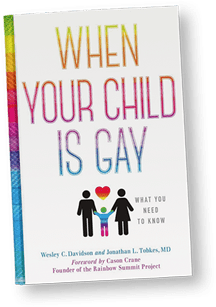Homelessness A Big Problem For LGBTQ Kids
Next time you’re in a big city like New York and you see kids as young as 12 living on the street, in the subways, you may think they’re penniless, drop-outs from school or e.) all of the above. Chances are they are “throwaways,” GLBTQ kids (gay, lesbian, bisexual, transgender or questioning ) kids whose parents disapprove of their sexual orientation and have made it so unwelcoming in their own homes, that these “different” kids would rather live a hand-to-mouth existence on the streets than be bullied at home.
GLBTQ children who hear “no son of mine is going to be gay!” or “you’re going to hell!” or “you can’t be!” would rather leave home, even if it means turning to prostitution, selling drugs, being turned away from a shelter due to lack of beds.
Studies of LGBTQ Youth’s Runaways
The National Alliance to End Homelessness roughly estimates that 550, 000 people up to twenty-four years old are homeless over a year’s time. A survey of shelters nationwide from 2011 to 2012 found that up to 40% of homeless young adults identified as LGBT, according to the study conducted by three human rights groups.
The U.S. Department of Housing and Urban Development (HUD) conducted its annual homeless assessment and found that 22,000 youths were on the streets nationwide one night last year!
With gay celebrities coming out, it seems every day, and more GLBTQ being more open about their orientation, this “no holds barred approach” has had a direct effect on the homelessness state. “”We see more and more homeless, “ according to Caitlin Ryan, Director of the Family Acceptance Project at San Francisco State University. Ryan has seen more youth first disclosing their sexual orientation between the ages of seven and thirteen.
The Family Acceptance Project’s study found that GLBTQ kids are more than 8 x more likely to have attempted suicide, and nearly 6 x as likely to report high levels of depression, 3 x more likely to use illegal drugs and to be at high risk for HIV & sexually transmitted diseases.
A recent study by GLSEN (Gay, Lesbian, Straight Educational Network)shows that LGBT youth report bullying and harassment online 3 x greater than their non-LGBT peers. They are also twice as likely to report being harassed via text message.
Odds Are Against LGBTQ
With the likelihood of a more difficult struggle for an LGBTQ child given the statistics, the child needs a secure loving home where he is loved unconditionally. If you are having trouble accepting your child’s sexual orientation, please remember:
- · He/she is the same person you’ve always loved and deserves your unwavering support.
- · With the outside world not always embracing his sexuality, he needs your home to be a haven from outsider’s prejudice.
- · If you disapprove of his LGBTQ behavior, remember you can love the “sinner, but not the sin.”
- · Do you really want to worry about the safety of your child living on the street, possibly contracting HIV, being mugged?
- · Your rejection may sting forever.
What’s a Parent to Do?
- · Keep your disapproval to yourself. You can talk to a supportive friend, especially one who has been in similar circumstances.
- · Attend a PFLAG (Parents for Lesbians and Gays) meeting in your area and receive support from parents who’ve “been there.”
- · Seek therapy one-on-one to resolve issues that prevent you from accepting your child.
- · Open up an on-going dialogue with your child. Ask him how he/she feels about being “different.” Tell him you want to understand.
- · Get support on-line for parents of gay and lesbian children.

When Your Child Is Gay: What You Need To Know
For more detailed advice, see book, co-authored with a mother of a gay son and a psychiatrist, Jonathan L. Tobkes, M.D.